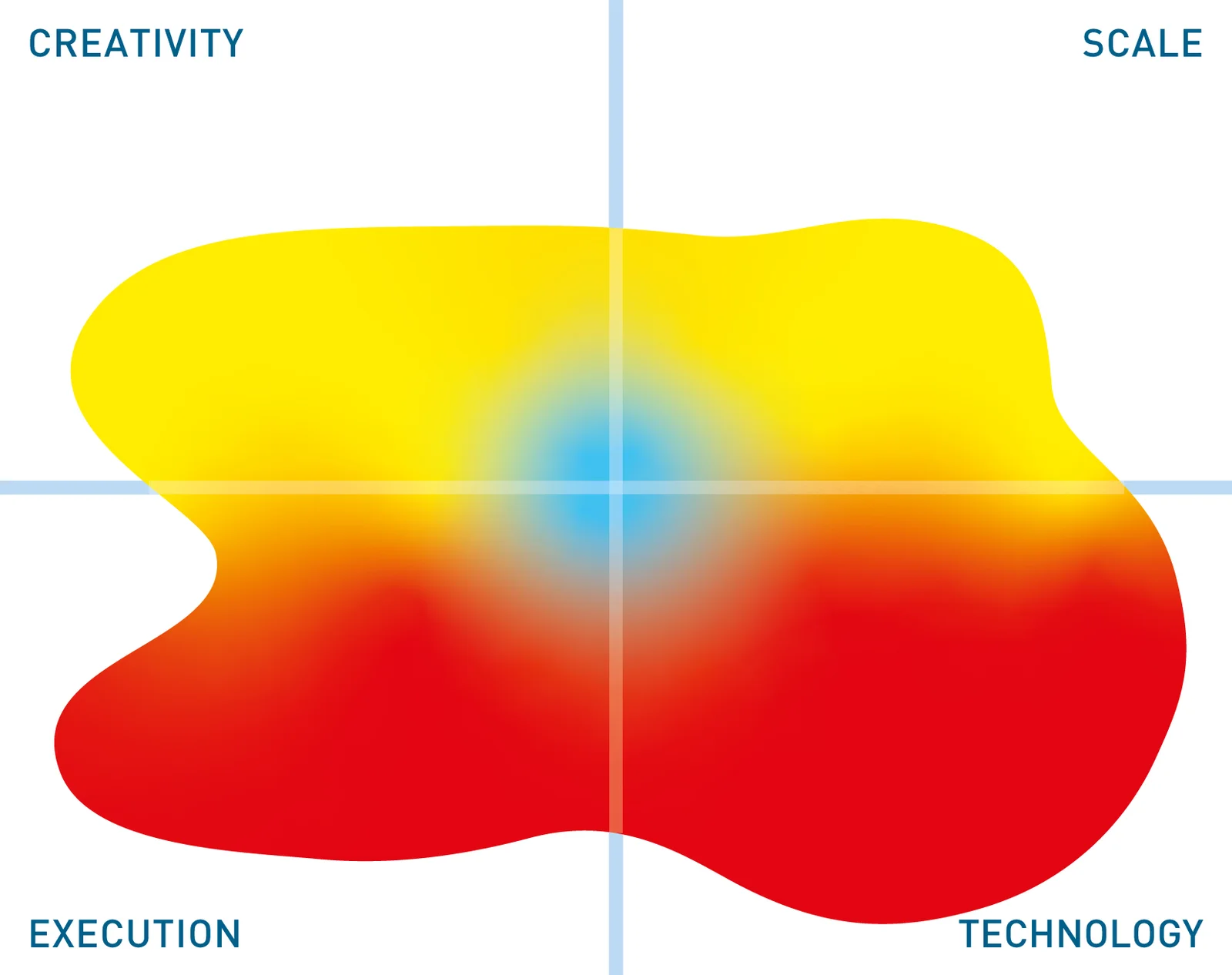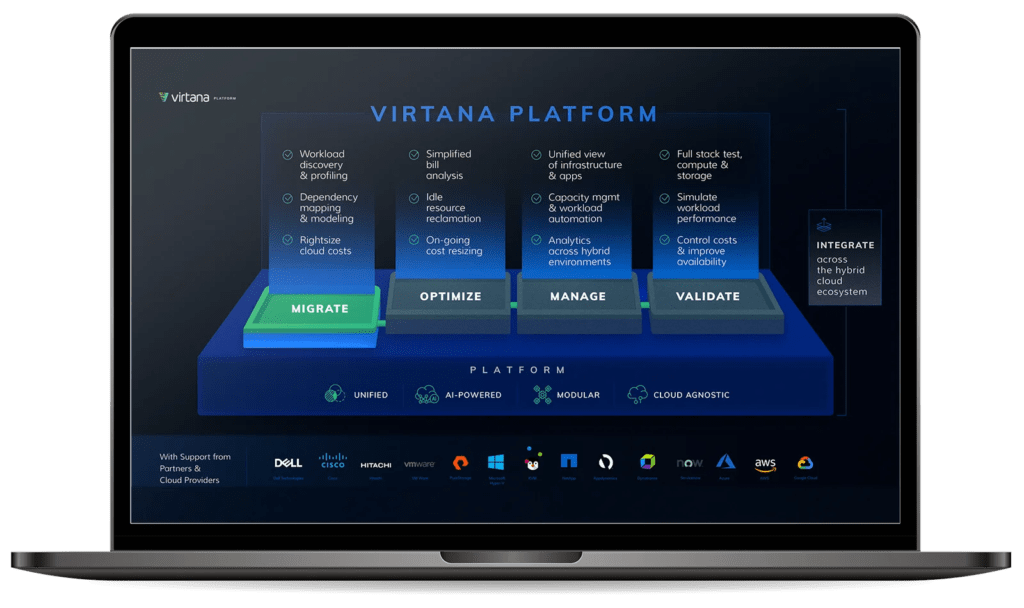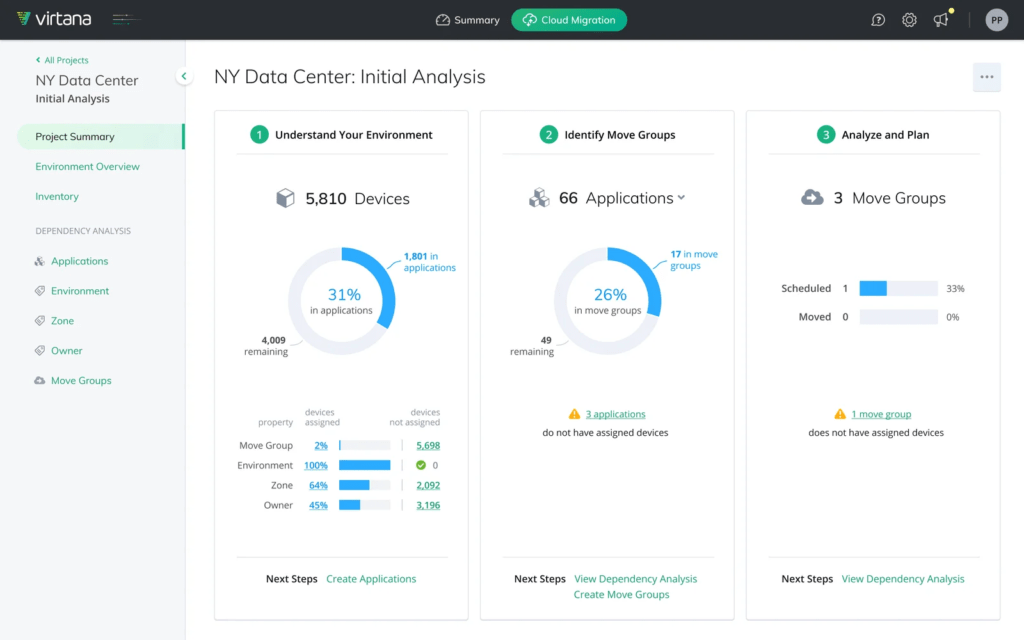Virtana Platform: Unified hybrid cloud optimization platform
Update solution on December 2, 2020

Virtana is a SaaS based modular platform for migrating and optimizing capacity, performance, and cost across public, multi-cloud, and hybrid cloud environments. Virtana has a strong, 10 year pedigree in on-premises and private cloud performance monitoring and optimization through the VirtualWisdom solution, (a more detailed description of the features and functions of VirtualWisdom can be found in the Bloor InBrief on VirtualWisdom 6.0 published in 2019). Additionally, the acquisition of Metricly has delivered advanced cloud capacity and cost optimization functionality, on Amazon Web Services (AWS), Microsoft Azure and Google Cloud Platform (GCP), branded as CloudWisdom. The capabilities of these two solutions will form the basis for Virtana to become a unified hybrid cloud optimization platform covering multi public cloud, hybrid-cloud, and private clouds.

Fig1 – The Virtana Platform
The Virtana platform, which initially leverages VirtualWisdom and CloudWisdom functionality, is designed to be highly modular. A series of releases planned for the next two years will see a strong consolidation and integration of existing product families into the new SaaS based platform.
The first of these releases, due in the first half of 2021, is a development of the existing Cloud Migration Readiness solution. This uses the simulation and validation features of another existing Virtana solution, WorkloadWisdom, to present a workload profile that consultants then apply to the platform to assess the suitability of non-cloud applications for migration and their configuration and capacity requirements. Expect to see this capability fully integrated and offered as software during 2021 to provide customers with a fully automated “know before you go” approach to cloud migration.
Further releases will bring in
- performance analytics and risk evaluation to deliver public cloud rightsizing recommendations.
- a completely new playback capability. Using features found in WorkloadWisdom, it enables migration recommendations provided in the Migrate module to be loaded into a load simulation. This provides performance and capacity validation of the proposed cloud architecture and therefore an extra level of assurance on migrations to the cloud.
- consolidates all the monitoring feeds from existing Virtual Wisdom sources as well as telemetry provided directly by public cloud providers and a range of other integrations like AppDynamics and ServiceNow to provide a single pane of glass visibility across a complete multi-cloud, hybrid cloud and on-premises legacy environment.
Customer Quotes
“We haven’t had an outage in four years, primarily due to the VirtualWisdom Platform. In transition to the cloud, we found that cloud vendors don’t provide the visibility we’re used to on prem. CloudWisdom now provides that for us.”
Jason Vickerman,
Head of Infrastructure and Networks, CO OP
“The only parts of our system not having issues right now (during the COVID-19 disruption) are backed by Virtana.”
Roger Evans,
Principle – Systems Engineering VP of IT
Virtana is a SaaS based platform that combines high-fidelity baseline information provided by discovery, mapping, dependency analysis and profiling with analytics, to measure historical workload patterns and calculate the exact resource requirements in the various dimensions of CPU, memory, I/O, network and disk usage in public clouds. It then automatically formulates specific recommendations for each instance. This tool also allows users to apply additional customized constraints to control the outcome of the recommendations.

Fig2 – Comprehensive Analytics Dashboard
Virtana also leverages self-learning anomaly detection and pre-configured alerting policies to identify capacity bottlenecks, notifying administrators in real-time to avoid the risk of end-user impact. Unexpected capacity bottlenecks may happen because of a sudden change in application work, a fail-over, or an intended or unintended change in infrastructure configuration.
Virtana includes a capability to detect sudden increases in daily spend to avoid an end-of-month surprise. It automates the process of comparing cloud spending over time by correlating real-time data collected via APIs with detailed billing logs. The cost data can be grouped by meta-data such as attributes and tags, including related charges like data transfer and storage usage – all at an instance-level. Finally, it can account for the amortization of upfront spending commitments made to cloud providers that must be allocated to an individual instance based on usage. The result is a comprehensive yet simple report that can be set up once and regularly emailed to all stakeholders. This capability works on AWS, Microsoft Azure, and Google Cloud Platform.
More than 50 integrations (integrations in this context are systems that Virtana collects data from) are available, out of the box, for many of the leading cloud data, development, integration, and management tools. These integrations are offered with collectors, agents, and automation software. Additionally, a RESTful API allows you to read and write data programmatically. This means that you can perform a wide variety of tasks, including adding new integrations.
The first new module in 2021, will build on the existing Cloud Migration Readiness service. This uses detailed production workload information in private cloud and legacy on-premises applications from the WorkloadWisdom solution to analyze production workloads, create workload models, and then administer the generation of realistic simulated cloud workloads against any file, block, or object storage target via Workload Generators. It has a web-based GUI that is built for all user levels to provide an advanced networked storage performance validation solution that incorporates a sophisticated workload modelling methodology. New integrations with VirtualWisdom enable the capture and use of further high-fidelity information to help automate the process of discovery and profiling. While elements of consulting services are still required in this first release, there is a clear roadmap to providing a fully automated “know before you go” solution for customers wanting assurance about planned cloud migrations.
Further releases in the short to medium term are planned to provide a powerful Cloud Brokerage capability, and manage end-to-end visibility and management into a unified platform through a single pane of glass. We will revisit these areas when detailed functional capabilities are announced.
Business leaders have known for some time now that, in an increasingly digital-first world, the performance of customer facing applications can make the difference between business success and failure. Yet, as underlying infrastructures have become more complex, residing in both on-premises and cloud data centers, with diverse compute, network, and storage components from a wide range of vendors, understanding the impact and cross-correlation of events has become more difficult.
The growth in the use of public cloud, from Amazon, Microsoft and Google in particular, has enabled organizations to deliver and scale new applications and services faster than ever before. It also promised significant cost savings. This has not always been the case. Therefore, getting better visibility into, and control of cloud usage and cloud costs is becoming more important.
Today, few organizations maximize performance and availability of IT without any regard to cost. Likewise, few would ignore performance and availability completely in an effort to reduce costs. It is all about understanding and managing risk. Given the complexity of hybrid IT infrastructures, the volume and velocity of transactions and the speed of change, it means that balancing performance, cost, and risk is something that needs a deep understanding of your on-premises workloads and the interdependence of applications and their supporting infrastructure as well as automated systems with sophisticated artificial intelligence (AI), machine learning (ML), and strong analytics.
The Bottom Line
The ability to decode and understand where the best place is to run your business applications from a capacity, performance, and cost perspective, is now a critical business requirement. While Virtana stresses the importance of using data to drive more intelligent decisions, which we agree with, we believe that their legacy of skills and expertise in capturing and acting upon real-time, observed data from a wide range of sources remains a key differentiator. The latest developments Virtana are delivering, combined with that legacy, will place them in the forefront of the emerging multi-cloud migration, performance, and availability management market. To be competitive you need to embed intelligence in your infrastructure. The Virtana platform allows you to do that.
Related Company
Connect with Us
Ready to Get Started
Learn how Bloor Research can support your organization’s journey toward a smarter, more secure future."
Connect with us Join Our Community
